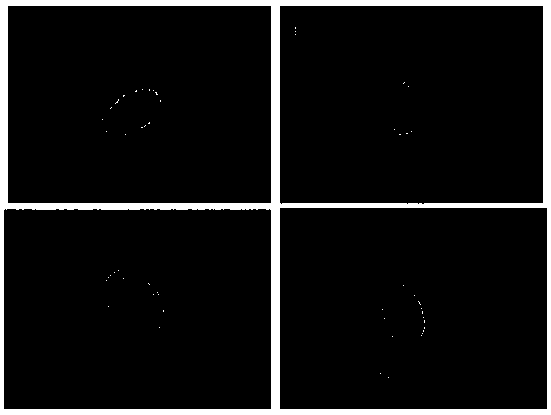Method for freeze-preservation and recovery of uronema marinum isolated from fugu rubripes
A technology of redfin puffer and cryopreservation, applied in the biological field, can solve the problems of loss of insect strains, weakening of moth-eaten infection ability, cumbersome passage, etc., to avoid bacterial contamination, prevent genetic drift of insect strains, and avoid cumbersome processes Effect
- Summary
- Abstract
- Description
- Claims
- Application Information
AI Technical Summary
Problems solved by technology
Method used
Image
Examples
Embodiment 1
[0019] a. Scutellum ciliates were isolated from the festered tissue of the sick redfin puffer in a farm in Dalian City, Liaoning Province, and identified as marine cercia ( Uronema marinum ), inoculate the obtained marine C. filariae in a broth medium for in vitro acclimatization and culture for 15 days to obtain a marine C. cerevisiae liquid. The broth medium is 5 g of red-finned oriental puffer per 100 mL of sterilized seawater The homogenate was boiled for 10 minutes, and then filtered through 200-mesh gauze;
[0020] b. Then inoculate the marine C. filariae solution in the broth medium at a volume ratio of 1:100, and culture it at 20°C for 120 hrs to obtain the marine C. cerevisiae solution in the exponential growth phase;
[0021] c. Pipette 1 mL of marine C. filariae solution in exponential growth phase into a sterilized 1.5 mL centrifuge tube, centrifuge at 2000 rpm for 10 minutes, discard the supernatant and slowly add 1 mL L-15 complete medium to the centrifuge tube ...
Embodiment 2
[0028] The recovery method of the present invention corresponding to Example 1 is as follows: quickly put the cryopreservation tube stored in liquid nitrogen for 24 hours into a water bath, bathe in 37 °C for 2 min, centrifuge at 4000 rpm for 5 min, discard the supernatant, add L-15 to completely The culture medium was resuspended, transferred to a multi-well plate, and cultured for seven days in a constant temperature incubator at 20°C.
[0029] Observe and count under the microscope every day (the value is expressed as the mean value ± standard error), the result: from the first day to the second day, it was in a stagnant period, and no worms with strong vitality were observed; on the third day, vigorous worms were observed , counting its population density was 1586±82 / mL; on the fourth day, counting its population density was 158400±1728 / mL; on the fifth day, counting its population density was 590000±20406 / mL; on the sixth day, counting The population density was 460133±27...
PUM
 Login to View More
Login to View More Abstract
Description
Claims
Application Information
 Login to View More
Login to View More - R&D Engineer
- R&D Manager
- IP Professional
- Industry Leading Data Capabilities
- Powerful AI technology
- Patent DNA Extraction
Browse by: Latest US Patents, China's latest patents, Technical Efficacy Thesaurus, Application Domain, Technology Topic, Popular Technical Reports.
© 2024 PatSnap. All rights reserved.Legal|Privacy policy|Modern Slavery Act Transparency Statement|Sitemap|About US| Contact US: help@patsnap.com









